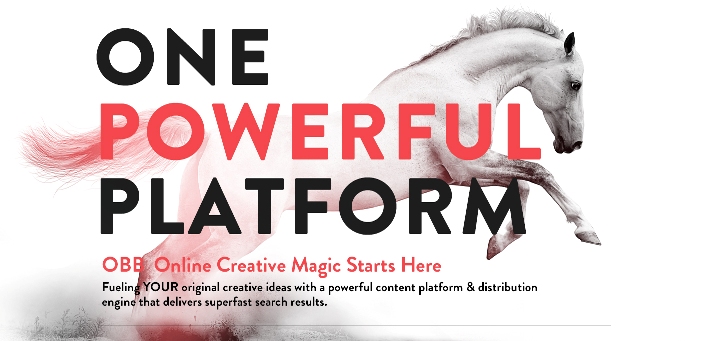
Innovation is the key to change. The creative spark to constantly make things better is what fuels our imaginations. We are constantly inventing new product features. From a gallery application that morphs into a screen wide display map to mobile applications involving images – we come up with innovations and news features to the OneBigBroadcast platform almost daily.
Our creative team is always pushing the envelope of the newest browser features that result in stronger branding and better user experiences. While the creative team is conceptualizing our platform team works hand and hand constantly inventing new ways of displaying important content or coming distributing it far and wide for maximum social value.
Change happens so much here at OneBigBroadcast that we often don’t take any notice of it. In fact we come up with major changes and innovations almost every week.
Those same changes and innovations then become part of the overall platform as upgrades and the entire user base benefits from the innovative spirit alive here OneBigBroadcast.
One thing is for certain - we've got some great new features and applications just about to be released that will help take your business to the next level!
To get a glimpse into innovation at work check our how our blog engines work and how one post touches between 100 and 345 social touch points all connecting back to enhance your oveall brand's visibility. That's why change is good
See blog Data Touch Points Here
Refresh your marketing - Build a lead generation engine using your website
Tags: Why should you refresh your website for the purpose of inbound marketing?
Why should you refresh your website for the purpose of inbound marketing?-
Because it's cheaper - a lot cheaper - than other marketingÂ
 (up to 61% cheaperÂ
according to research) -
Because it can be measured - "What, I can measure real ROI on myÂ
marketing? You're kidding!" No we're not. -
Because it's where you can influence most of your buyers.Â
 We are in the "era of the buyer" whereÂ
the buyer is searching for information online, all day every day, if you're notÂ
there they won't find you. It's that simple. Over 85% of B2B buyers start theirÂ
purchasing journey online through outlets like social media according to research fromÂ
Forrester.
Additionally, digital marketing is evolving at lightning speed, making it difficult for most of us to keep pace, let alone stay ahead of the curve. And,the result of all these advancements is that most marketers are overwhelmed.
Regardless of the rate of change, one indelible fact stands head and shoulders above the rest, it's incredibly important to recognize that simply having a website is notÂ
enough.
In today's world, B2B marketers must adapt their website and turn it into an Â
inbound marketing lead generation machine. That may seem a lofty goal.Â
So, your website will need to wear many hats. A website needs to perform andÂ
not just  exist. Your site needs to attract visitors, educate them and convince them to buy.
In most cases, the traffic you drive to your website from blogs, social mediaÂ
sites, as well as organic and paid searches ends up converting into leads orÂ
sales. Without your website acting as an online "home base," it would beÂ
difficult to attract new business. This is why having an effective website isÂ
so crucial – and why it's so important that it contains powerful key elementsÂ
to drive more traffic, leads and sales.
Whether you have some experience in inbound marketing and just want to brushÂ
up your skills or you know you need to evolve your current marketing, take our Â
B2B Marketing Health Check to find out your starting position. "Auditing" where you are nowÂ
is the first crucial step in building a plan for moving forward.
1) Getting found by your buyers
Let's face it, it's not going to be much of a website if no one visits.Â
Therefore, your first mission is to get found online,Â
covering the very top of your inbound marketing strategy funnel. BuildingÂ
inbound links, discovering the secrets to on page SEOÂ
and how to create effective meta tags are all essential ingredients.Â
2) Investing in good design and usability
Let's assume you're really gaining traction – getting found online. Your nextÂ
focus is to get that traffic to stay and not stray.Â
Remember, you only have one chance to make a good first impression.
Make sure your website reflects your brand and positions your company asÂ
trusworthy and credible. Don't underestimate the power of good design,Â
including: navigation, fonts, colours, images and branding consistency.
But don't get caught up on the need to "look pretty", and instead focus onÂ
the functionality of your site. How easy is it for people to find what the areÂ
looking for? Equally important, is your message blisteringly clear?Â
Really? I mean really! Or are you disguising your ability to genuinely helpÂ
your buyers under layer upon layer of corporate double speak and productÂ
gobbledygook about why you are the best game in town?
3) Building content
With the rise of inbound marketing, content has become front andÂ
centre in the minds of marketers. It is what search engines andÂ
potential customers are looking for. It's what drives visitors to your site andÂ
turns prospects into leads. There is no disputing that content is king.
However, while search engines are getting smarter and smarter and buyers areÂ
becoming more and more selective, it is quality content thatÂ
is king. When it comes down to it, your buyers' reaction to your content willÂ
be the ultimate test. Does your content generate leads? Do you have a contentÂ
marketing plan that fuels your lead generation engine?Â
4) Converting at each funnel stage
Now that you've increased traffic to your website, it's time to convert prospects toÂ
leads. Don't let visitors leave your website without providingÂ
them with valuable information or you'll lose the opportunity to nurtureÂ
them until they are ready to buy.
Landing pages are one ofÂ
the most important elements of effective lead generation. Building powerfulÂ
landing pages allows you to direct your website visitors to targetedÂ
information, present them with robust calls-to-action andÂ
capture leads at a much higher rate.
5) Measuring results
By measuring your inboundÂ
marketing you get to see what is and is not working and then youÂ
can change where you invest your precious marketing time and dollars. SmallÂ
incremental tuning of your inbound marketing engine produces significantÂ
overall improvement in the quality of leads on which your sales team canÂ
feed.
If your business is struggling to adapt to new marketing strategies or, youÂ
simply haven't been able to generate a real impact in your chosen market, it mayÂ
be time to conduct a marketing audit.
 The truism “You get what you pay for†is as true as true can be when it comes to building a company website. When small firms fail to budget properly, one of these nightmare scenarios is likely to ensue:
The truism “You get what you pay for†is as true as true can be when it comes to building a company website. When small firms fail to budget properly, one of these nightmare scenarios is likely to ensue:- The site ends up costing two or three times more than expected, causing all-important post-launch marketing activities to be cut back or eliminated.
- The site ends up having half or a quarter of the desired functionality, rendering it nearly useless.
- The site ends up as a series of compromises in design, content and functionality, making a mediocre impression on customers and prospects.
Step One: Create Site SpecificationsSetting a realistic budget starts with having an idea of what you want the site to do, so let’s start there. Important things to consider include:
- Design. How much customization do you want? Will a standard WordPress theme suit your needs? Do you need a custom design from the ground up? Something in between? Do you have imagery for your new site, or will photos need to be taken? If so, how many photos (or other imagery such as charts and diagrams) will be needed?
- Content. How much unique content will your site need? 10 pages? 100 pages? Will it be easy or hard to write? Do you have the ability and bandwidth to write it, or will you need to outsource copywriting? If outsourced, will the writer need to do extensive research to write the copy properly?
- Functionality. Do you need more than a basic contact form? Do you want to offer downloadable PDFs or other information? Do you want leads from various forms to be tracked? Will you need e-commerce, and if so, what type of payment options? Are there any other functional requirements, such as integration with internal systems or third-party e-commerce sites? Do you want to optimize your site for search engines (SEO)? Will you need W3C or other compliance? Do you want Flash design or a customer portal?
Considering three or four proposals on the initial go-around is best, because you’re apt to see a fairly wide range of prices and approaches.
Step Three: Align Expectations and CostsA likely outcome will be the realization that your desired site costs much more than you expected, but this is OK, because you’re now in a position to have a meaningful review of development options, their real value, and their real cost. The biggest disconnects that are revealed by following this three-step approach include:
- Design disconnects. Creating images is expensive and time-consuming. Often, firms don’t care about images in the early stages of a project, but later on, when they see boring, text-heavy pages on the test site, they desperately want a lot of customized imagery. Settling for tired stock imagery, the usual Plan B, results in a generic-looking, unimpressive site.
- Content disconnects. Content is far more expensive and time-consuming to create that most people realize. Firms often assume they can have an employee whip up content at the last minute, and learn too late that’s an impossible task.
- Functionality disconnects. Firms typically have no idea what pieces of site functionality — some of which were detailed above — actually cost. They become frustrated in mid-project when they ask the developer to “throw in†a little e-commerce and discover it costs $5,000 to do so.
Following this plan takes serious upfront strategic thinking and grunt work, but the payoff is big. Pulling a budget out of thin air, or committing your business to a new site without a budget at all, are risky approaches that can drain your bank account and set back your Internet marketing for several years. It’s an unnecessary risk.
Brad Shoor, Contributor
DealerNet Services
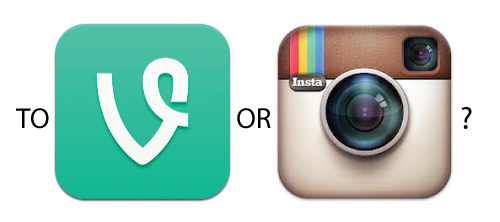
It should be noted that while Facebook took ownership of Instagram, Vine is owned by Twitter. As you might expect this makes Vine and Instagram virtual proxies for their respective corporate parents. This has turned into a tit-for-tat between the two, with one unveiling a new feature followed closely by the other. Shortly after Facebook introduced video for Instagram, Twitter announced it had redesigned the camera tools, channels for sharing and the ability to re-Vine other posts.Â
Instagram was originally designed to host photos, and only recently added the video features. Vine, on the other hand, was designed to take, edit and host six second videos. This has contributed to slightly different types of users for each app. Vine, which was adopted by eager new users, tends to be a little more creative and unorthodox, while Instagram users are more likely to be more human-oriented and heartfelt. Vine also seems to attract users who are more enthusiastic about the challenges and rewards of the medium, while Instagram may be more tailored to casual users.Â
Instagram marketing is probably the area to devote the lion’s share of your interest because it has almost 130 million active users, while Vine reports only 13 million users. With the added power of Facebook behind it, Instagram marketing is more likely to skyrocket in popularity, while Vine has tapered off. This is not a death sentence for Vine, but it does hinder their heretofore unobstructed ascendancy.Â
Instagram has some other benefits like the ability to filter clips and delete them, while Vine requires scrapping the entire video and redoing it. Instagram also allows clips which are 15 seconds long, however, added length is not necessarily a clear advantage. Twitter and Vine have performed a variety of studies indicating the 6.5 seconds is optimal for most users. Â
Utilizing Vine or Instagram marketing is not as simple as shooting a promotional video. Like their parent social media cultures, users are not usually amenable to marketing messages which direct them to a retail site. You will need to produce creative, humorous or intriguing videos that compel users to discover more about your organization. The ability to rapidly produce and easily share these short videos should stoke your enthusiasm for these apps. A truly engaging clip can rapidly inundate the blogosphere and generate huge buzz about a product or organization.Â
Both Instagram and Vine can be portals for finding and connecting with new consumers. With the right advice and expertise, your next Vine or Instagram marketing video can open the floodgates to whole new markets.Â
Posted by Drew Palmer
DealeNet Services
 Pinterest has quickly evolved from a simple idea to one of the most popular, revenue generating social media platforms. In the last 5 months alone Pinterest has grown its user base 43.7 percent to more than 70 million. These users aren't merely pinning pictures; they're buying products.
Pinterest has quickly evolved from a simple idea to one of the most popular, revenue generating social media platforms. In the last 5 months alone Pinterest has grown its user base 43.7 percent to more than 70 million. These users aren't merely pinning pictures; they're buying products.Most social media channels lack the ability to drive non-assisted conversions and rely on attribution to justify spend. New studies are constantly being released showing that referral traffic from Pinterest converts directly into e-commerce conversions.
So how can SEO professionals and e-commerce companies unlock the potential of this new channel?
SEO: Acquire More LinksBuilding relationships is at the core of any ethical, results-oriented link building campaign. Identifying related bloggers and key influencers is the first step toward building these relationships and acquiring new links.
Pinterest is a great way to discover new blogs for your outreach campaign. Pinterest's search functionality makes it easy to find relevant boards. For example, if you work with or for a lawn care provider you may search on Pinterest for “weed control†boards and get the following result:
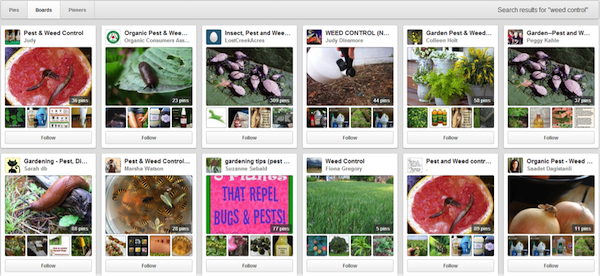
There are so many related boards and pins that I could have scrolled for hours.
In order to boost your outreach program it's important to only focus on Pins that were linked from a website as opposed to simply uploaded by a user. Every website you find is now a potential site to get a link from.
It's also important to pay attention to key influencers even if they don't pin from a website. Most users will link other social media handles with their Pinterest account. If you identify a popular user in your niche, check to see if they have a Twitter account that may include a website that they own or blog for.
E-commerce Brands: Sell More ProductsThe vast majority of online retailers aren't capitalizing on the revenue potential that exists on Pinterest. Images are an extremely powerful tool that can increases sales exponentially.
What channel is seeing the largest budget and click growth amongst online retailers? What's driving all of Google's incremental ad revenue? Answer: Product Listing Ads! (For more information on the growth of PLAs check out this post.)
Pinterest is slowly but surely moving to a paid model that will mimic Google PLAs. A few months ago they introduced Rich Pins, which give advertisers the ability to include price and availability information for various products (and now Pinterest will alert users when prices drop). They have also expanded their analytics package to give advertisers more information around how users interact with their pins (translation: products).
To maximize your revenue on Pinterest, it's critical that all of your products are pinned.
Utilizing rich pins will increase your conversion rate and attract users who are buy mode. To take advantage of this new feature, companies have to format their product in one of two ways:
- oEmbed
- Semantic Markup using Open Graph or Schema.org
If you don't have the dev resources to implement the proper formatting or get rejected by Pinterest, there are still other options to get your products listed. The boards for your brand should mimic your category and sub-category structure.
Below is an example for Dick's Sporting Goods golf category. Any of their golf categories or sub-categories would be great candidates for potential Pinterest boards.
Written By George Fischer
Dealernetservicesonline.biz
 Words are hooks, words are levers There's a debate raging in my town over whether or not to replace the existing planted-grass school football field with what used to be known as Astroturf. One side has already won a crucial victory: the local paper calls the new alternative, "turf."
Words are hooks, words are levers There's a debate raging in my town over whether or not to replace the existing planted-grass school football field with what used to be known as Astroturf. One side has already won a crucial victory: the local paper calls the new alternative, "turf."Turf is what we call a racetrack, or half a fancy dinner (surf and...). Turf is short and punchy and feels organic. If they had called it 'plastic' or 'fake grass' or 'artificial turf', every conversation would feel different before we even started.
What to call the new diamonds that are being manufactured in labs, not dug out of the ground under horrible conditions? Some want them to be called 'artificial diamonds' or not diamonds at all. Others might prefer 'flawless' diamonds (because they are) or 'perfect'.
Is it a 'course', a 'group' or a 'club'? It might be all three, but the word you choose will change the anchor and thus the leverage that word has going forward. Are you a 'consultant', an 'advisor' or a 'coach'?
Engineers and doctors and other scientists seem to think they're skipping all of this when they use precise, specific language. But the obvious specificity and the desire to scare off untrained laypeople is in itself a form of leverage.
For politicians and others that want to re-invent the language for their own ends--you can work to plant your hook anywhere you choose, but if you torture the meaning and spin, spin, spin, you risk being seen as a manipulator, and all your leverage disappears. If your hook finds no purchase, you have no leverage.
On the other hand, the great brands (Pepsi, Kodak, etc.) planted words that meant nothing and built expensive fortresses around their words, words that now have emotional power.
The only reason words have meaning is because we agree on what they mean. And that meaning comes from associating those words with other words, words that often have emotional anchors for us. This isn't merely the spin of political consultants. It goes right to the heart of how we (and our ideas) are judged.
Written By Seth Godin
DealerNet Services
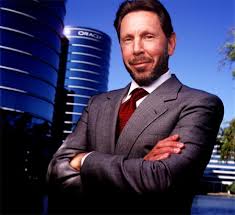 This survey based whitepaper, based on interviews with 229 executives worldwide assesses the challenges and opportunities faced by global businesses as they optimize sales resources to develop territories and incentive compensation plans. This is critical in response to emerging market opportunities and complex global economic challenges.
This survey based whitepaper, based on interviews with 229 executives worldwide assesses the challenges and opportunities faced by global businesses as they optimize sales resources to develop territories and incentive compensation plans. This is critical in response to emerging market opportunities and complex global economic challenges.Download Button
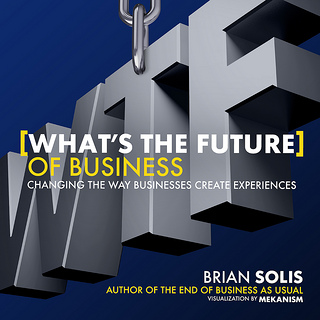 Have you ever wondered what the future of business will look like? Maybe you figured it’s going to be something like business in the past: buy stuff, sell stuff, try to make a profit by selling stuff for more than it cost you to make it, building a better mousetrap, winning friends and influencing people, crossing the chasm, riding the long tail to the tipping point with the other outliers, going from good to great, and dealing with cheese that keeps moving around.
Have you ever wondered what the future of business will look like? Maybe you figured it’s going to be something like business in the past: buy stuff, sell stuff, try to make a profit by selling stuff for more than it cost you to make it, building a better mousetrap, winning friends and influencing people, crossing the chasm, riding the long tail to the tipping point with the other outliers, going from good to great, and dealing with cheese that keeps moving around.The future of business won't be like that. The future of business is all about dazzling people with amazing customer experiences, says Brian Solis, whose new book, What’s the Future of Business? Changing the Way Businesses Create Experiences, has a cover with the letters “WTF†in huge block letters -- a hint, perhaps, that this is not going to be some ordinary business book, but rather a radical manifesto about change, innovation, and disruption. It's business with a dash of irreverence and punk rock thrown in, a little sneer that says, Look, people, the world has changed, there's this thing called social media, have you heard of it?Â
In this new world, the marketing of products becomes as important as the products themselves. Marketers are the ones who create experiences. Which means suddenly marketers stand at center stage, instead of off in the wings. Suddenly all eyes are on you. Are you ready for your close-up? Read this book and you will be.
The Influencers' Influencer Who is this Brian Solis? Folks at HubSpot know him as a pal who will be speaking at our INBOUND conference this August alongside Arianna Huffington, Seth Godin, and Nate Silver. But according to the book jacket, Solis is “globally recognized as one of the most prominent thought leaders in new media,†as well as a “digital analyst, sociologist, and futurist.â€Â He's an influencer's influencer, whose blog, BrianSolis.com, is considered a must-read for marketers. Solis is a rare web intellectual, a guy who can melt your brain on Twitter but can also think and write convincingly in chunks of more than 140 characters. At INBOUND, Brian will talk about how the pace of innovation has sped up and impacted the pace of change within business overall, and probably expand upon the ideas presented in his book.
His Bold Ideas But what is the book about? It has one big takeaway. Companies are on a journey of transformation. We’re living in an age of digital Darwinism where you must innovate or die, all because consumers are more empowered than ever with the internet at their disposal.
And in this new age, Solis argues that we shouldn't segment these consumers by age -- Generation X, Generation Y, Generation Z, Boomers, and Matures. Instead, we should use “Generation C,†in which the C stands for Connected. Generation C serves as umbrella to describe consumers who are active on the internet and social media, regardless of age. “Gen C is not an age group -- it is a way of life,†he proclaims.
In this worldview, the binary is between those who are Connected and those who are Not Connected. The chief distinction is that, “To Gen C, experience is everything. What they feel about your products and services now and over time is shared through these connected networks.†The challenge for brands is to design the experience that those people will have, and “design the journey that they will embark on.â€
Too many companies are using social media but still not really talking to customers -- and that’s partly why they fail to deliver a complete experience, Solis asserts. Presumably these companies deserve points for trying, and it's nice that they've hired someone to run their Twitter feed, but they’re not making the most of the medium. To paraphrase the late great Steve Jobs: You’re doing it wrong. Solis shows you how to do it right.
What’s the Future of Business: Changing the Way Businesses Create Experiences is an ambitious and ultimately optimistic look at the challenges companies face as they adapt to a digital world, a world where empowered and ever more demanding consumers bring to each transaction a new set of expectations. It’s not just a how-to book, though plenty of advice is offered. Rather it is a call to arms, a call to action, a wake-up call to brands in every industry, a book that will help anyone in marketing do a better job of surfing the storm of change that surrounds us. A must read.
Also, don’t forget to come see Brian Solis speak at the INBOUND conference Aug. 19–22 in good old Boston.
DealerNet Services
 Unless your organization watches its Facebook stats carefully, you may not have realized Facebook has become increasingly less accommodating to brands and companies over the course of the platform’s recent updates. Some notable business owners, like billionaire Dallas Maverick’s owner Mark Cuban, have even spoken out against Facebook’s latest changes.
Unless your organization watches its Facebook stats carefully, you may not have realized Facebook has become increasingly less accommodating to brands and companies over the course of the platform’s recent updates. Some notable business owners, like billionaire Dallas Maverick’s owner Mark Cuban, have even spoken out against Facebook’s latest changes.
For example, in late 2012 TechCrunch noticed that posts made by brand pages were only being displayed to a tiny fraction of a page’s following, and were being hidden from the rest. Facebook has been restricting how many of a page’s followers see a given post, a statistic known as “Reach,†for several years now. However TechCrunch found that in late 2012 Facebook made changes to the newsfeed that caused the reach for brands to drop as much as 40% compared to what it was earlier in the year.
Posts for the average Facebook brand page are now being seen by less than 10% of their audience! For example, if you spent time, money and effort to build your Facebook following to 4,000 people, that means now each post you make is going to be seen by less than 400 of them.
Facebook has a solution for this though…you can pay them money and then they will show your post to more people. That doesn’t quite seem ethical though, does it? First you spend money to build your following on Facebook, and then you spend even more money to reach the following you worked so hard to build?
It’s no wonder so many business owners, like Cuban, are upset and considering leaving the platform. So, is it time for you to close your Facebook page? Here are three important things to consider:
1. Does your business model allow for recurring purchases?  There is a rule in marketing and sales that says it’s always cheaper to sell more to an existing customer than it is to find a new customer. If your business allows for customers to make repeat purchases, like an online store or clothing company with new items every season, then the chances are better that your company will get value from a Facebook page. However, if your customers only need to buy your product once, like a video game or a book, then you will always have to be finding new customers because your product doesn’t lend itself to repeat purchases. That will make it harder for you to come out with a positive return on your Facebook investment if you are continually having to find new customers instead of simply re-selling old ones.
2. Do you have other contact information for your Facebook followers? Depending on your company’s approach to Facebook, you may know that most of the people on your Facebook page got there because they were already following your company on its website, email list, or elsewhere. If that’s the case, there shouldn’t be much negative consequence to closing your Facebook page, because you can still reach those customers another way. However this situation is probably rare, so what can you do if you don’t have other ways to contact your existing Facebook fans?
Start by going to your page and looking at the cost for promoted posts. Figure out how much money you’d wind up spending to reach your desired number of fans each month. This will let you know how much money you can potentially save by moving people to another platform like Twitter, Tumblr, or an email list.
From there, come up with a budget for a contest, and an ad campaign to promote it to your Facebook following, that encourages people to switch to your new platform of choice. This will allow you to justify the expense of the contest and the promotional campaign because you can show that after a certain amount of time, say six months, you will have saved enough money in Facebook expenses to pay for the contest. And every month after that those savings will be contributing to higher profits for your company.
3. How are you measuring the value of your Facebook fans? This is the most important question to ask yourself about whether or not you should keep your Facebook page. Do you know the average revenue generated per fan? Or how many new fans you need to acquire in order for one to make a purchase? Unless you have some way of proving that having a Facebook page is making your company money, you’re running the risk of wasting a substantial amount of time and resources. It’s time for you to start making sure your Facebook page is creating a positive return on investment.
For example, if you know that for every 10 new fans you acquire on average one makes a $20 purchase, then you can look at how much it costs in advertising and administrative costs in order to get 10 new fans. It’s important to factor in the labor and admin costs because those are resources that could be doing something else potentially more effective at generating money for your business if they weren’t tied up running the Facebook page.
So, if it costs you less than $20 to acquire 10 new fans on Facebook, then it’s worth it to keep your page and pay money to grow your following. However, even if you’ve determined that your page is generating positive ROI now, that doesn’t mean that it will continue to do so. Especially if your business doesn’t allow for repeat customers, like the first question pointed out, make sure that you check in on your Facebook ROI regularly.
First, there’s no guarantee that Facebook won’t make changes in the future that will further reduce your ROI. You may also find that as you sell more of your product it will become harder to sustain the same volume of sales. You may reach a point where all of the people who are most likely to buy from you have already done so, and the only people left to target aren’t as interested. This would cause your sales to drop and require you to look at a new strategy to address the changed marketplace.
The bottom line is if you’re going to have a Facebook page, make sure you’ve got a justification for it. And “I’m doing it because all my competitors are doing it†doesn’t count. Just because they like to waste money doesn’t mean you should.
By Alon Popilskis
DealerNet Services
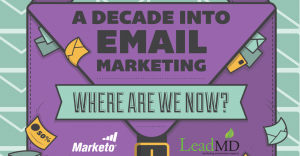 Are you getting the results you want from your email marketing campaigns? Email marketing has been around for a while now, and there’s a reason it’s such a popular channel in most marketers’ toolboxes. Savvy interactions can deepen customer relationships, inspire new ones, nurture and convert leads, and strengthen brand awareness. By delivering compelling messages tailored to specific customer triggers, marketers can take leads from engagement to purchase.
Are you getting the results you want from your email marketing campaigns? Email marketing has been around for a while now, and there’s a reason it’s such a popular channel in most marketers’ toolboxes. Savvy interactions can deepen customer relationships, inspire new ones, nurture and convert leads, and strengthen brand awareness. By delivering compelling messages tailored to specific customer triggers, marketers can take leads from engagement to purchase.
That said, not every marketer is getting the maximum results possible from their email marketing initiatives. In fact, some are completely missing the boat. To learn more about how to maximize your email marketing initiatives, be sure to download our new ebook, A Decade into Email Marketing: Where Are We Now?
The Evolution of Email Marketing
It’s true that we’ve come a long way from the early days of blast campaigns that usually hit the wrong customers, ended up in the spam filter, or simply created feelings of annoyance and intrusion. In fact, the time has never been better to be a marketer. Technologies like marketing automation allow companies to design polished messages that deliver the most relevant conversations to the right prospect at the perfect time. Lets face it, email has always been a cheap medium as well, with no printing and shipping costs to worry about, email helps mid-market and emerging businesses compete with the big leagues. Consider the cost of executing a digital campaign these days vs. the postage driven campaigns of just a few decades ago and you can see how powerful email is not only in terms of engagement but also as a cost cutting measure.
These days we use email for all kinds of initiatives. Whether we want to reenergize fading leads, deepen engagement with existing customers or launch irresistible upsell and cross-sell offers, we’ve got the tools to tailor our messaging with unprecedented precision. And as mobile rises in popularity with countless users, leads are more connected to their email than ever before.
Creating a Seamless Cross-Channel Experience
So what’s the problem? The truth is that there are so many strategies and channels to consider that many marketers feel overwhelmed. Some are uncertain of which tactics they should be using; some are pursuing unproductive initiatives; some are jumping from strategy to strategy without sticking to one long enough to see results. Still others are applying one overarching plan across all channels, without considering the specific parameters for social and mobile campaigns or the role of smartphones and tablets. To create a seamless cross-channel user experience, email strategies must align with the appropriate platforms.
Authenticity Through Relevance
The rapid evolution of marketing technologies has left many marketers with a skill gap, and others completely in the dust. Even businesses that have invested in good marketing platforms often lack the training to fully understand how segmentation, testing and analytic tools can help them drive ROI and measure campaign performance. Another common issue: the failure to understand the necessity of tailored and engaging content. The days of predictable promotional emails are over, and marketers must create relevant emails that foster an authentic connection with customers. Not only can such relevance make the difference between a delete and a transaction, but techniques such as initiating transactional emails or driving readers to dynamic landing pages on marketing platforms can boost conversions, revenue and brand visibility.
So let me ask you again: are you getting the most you can out of your email marketing campaigns? Are you using the right strategies for the right channels? To help you decide – and learn some new tricks – we’ve put together a new ebook, A Decade into Email Marketing: Where are We Now?, which focuses on deft marketing strategies to help you maximize the potential of this rich marketing tool. We’ll share the 5 pathways to high-impact campaigns that attract, convert and close. Take a look and discover how you can design emails that turn leads into customers and engagement into sales.
Want to learn even more about email marketing? Be sure to pre-register for Marketo’s upcoming Definitive Guide to Engaging Email Marketing available on August 7th!
Author: Justin Gray
DealerNet Services
Â
CALENDAR
CATEGORIES
TAGS
TWITTER POSTS
CALENDAR
- powered by
- One Big Broadcast
- creative by
- WebStager
© 2025 One Big Broadcast | All rights reserved

